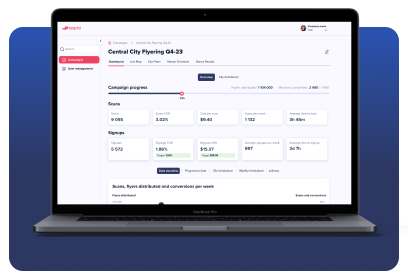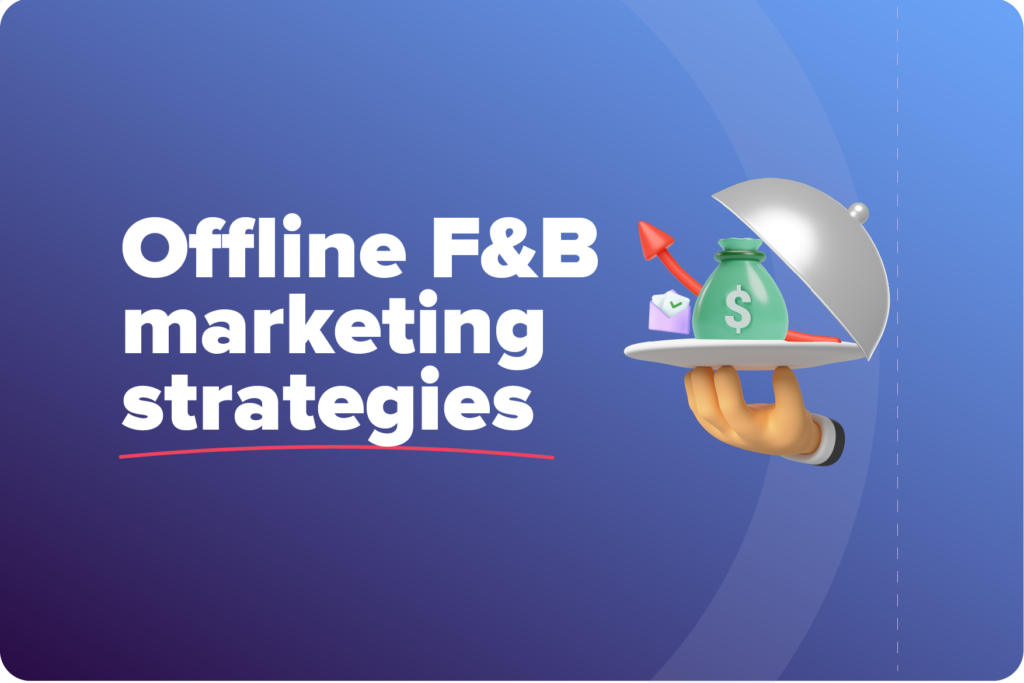Creating a leaflet marketing strategy is easy peasy. Here are 3 steps.
Setting up a leaflet marketing campaign is pretty similar to setting up any other marketing campaign, but there are a few things you’ll want to keep in mind before jumping straight in — particularly if this is a new channel for you.
Leaflet marketing might seem old hat, but some of the world’s biggest brands (including Uber Eats, whose flyer campaign reached 45 million people), utilise it as a means to get more eyes on their brand name, more feet through the door, and, ultimately, more cash in the bank!
So here are our three pearls of wisdom — here’s how to create an impactful leaflet marketing strategy.

3 steps to creating an effective leaflet marketing campaign strategy
1. Conduct preliminary research
Firstly, you need to identify the problem your campaign is trying to solve. What is your audience struggling with? What are their pain points?
Let’s say you own a fast-food restaurant and your customers choose to shop with you for one of three reasons:
- You cook the best version of your food in the area
- They can’t be bothered cooking
- It’s the end of the week and they want a treat
Find out why customers are shopping with you and exploit that knowledge by making it the central focus of your campaign. You know they’re short on time, so maybe your campaign could centre around how quickly your food can be delivered to their house. If they shop with you for a Friday or weekend treat, consider a Friday-only or weekend-only deal to capitalise on impulse buyers.
You no longer need to cast your net wide with leaflet marketing, marketing isn’t always a numbers game. Software in the leaflet marketing space is more sophisticated than ever, and together with the data you already have on your audience, it can be cross-referenced with open-source data, making sure your leaflet marketing campaign is focused on the right audience segment. So understanding your audience and what they want from you, forms an essential first part of your strategy.
Marketers who set goals are 376% more likely to report success than those who didn’t. CoSchedule

2. Set clear campaign goals
It’s nice to convert millions of customers, that’s everyone’s goal, right? But setting realistic campaign objectives is crucial. Without clear campaign goals, you’re unable to measure the success of your efforts. What are you defining as a success? Or a failure? These benchmarks keep you focused as the campaign is running.
Let’s put goal-setting into context, in a survey of 3,599 marketers, those who set goals were 376% more likely to report success than those who didn’t, and 70% of the most organised marketers achieve their goals most of the time.
But what happens if your leaflet marketing campaign is steering slightly off-course away from your goals? You can tweak it. It’s not like taking a punt on a full-page magazine ad; it’s easy to control with leaflet distribution software in your corner — pause or stop the campaign at any time, move distribution location, amend the leaflet design — you’re in the driving seat.
3. Choose the best method of leaflet marketing
There are many different types of leaflet marketing, but it’s easy to choose a method based on what you want out of the campaign. For example, if you want to build a personable relationship with your audience, and you value in-person, real-time feedback, you’ll want to pick either hand-to-hand flyer distribution or a door-to-door leafleting campaign. But, if you wanted to target customers from afar, you could try direct mail or car hanger marketing. There’s a leaflet marketing type to suit all types of campaigns.
Local car hire and car-sharing company Getaround saw 3,000 first-time users after working with Oppizi to elevate their brand awareness through flyer distribution. Pretty good going.
Before you go
Don’t forget to measure your campaign’s success. Defining measurable goals is only one half of it. After you’ve pressed play on your leaflet or flyer distribution campaign you can head straight to your Oppizi dashboard to see when and where your audiences are most receptive to your campaign. Track check-in times, number of flyers distributed, and budget spend per leaflet distribution.
These kinds of granular insights will help you get a crystal clear picture of your audience — what works and what doesn’t.






